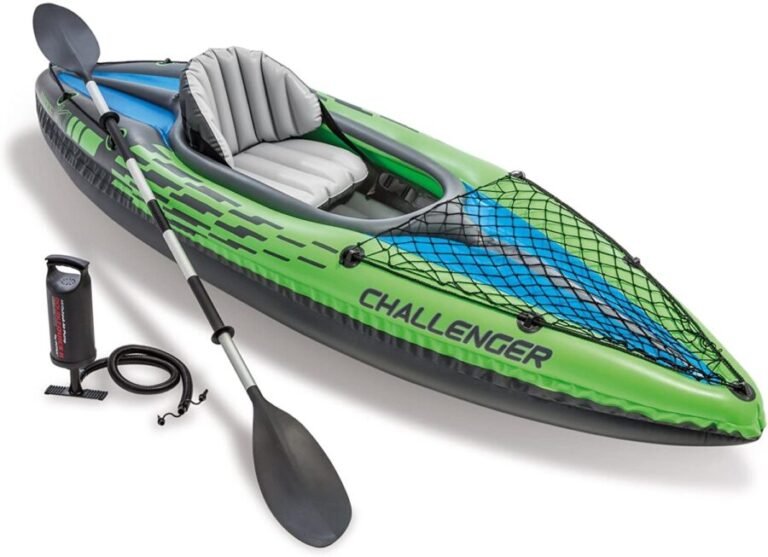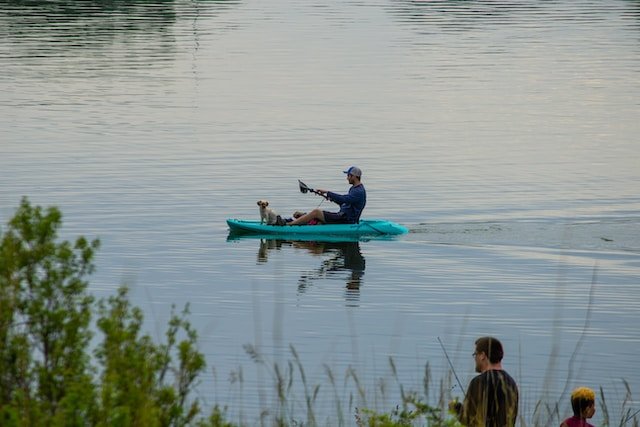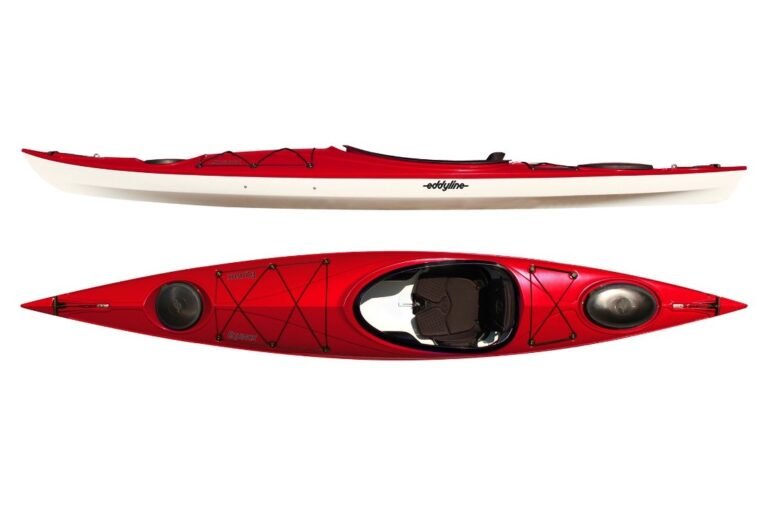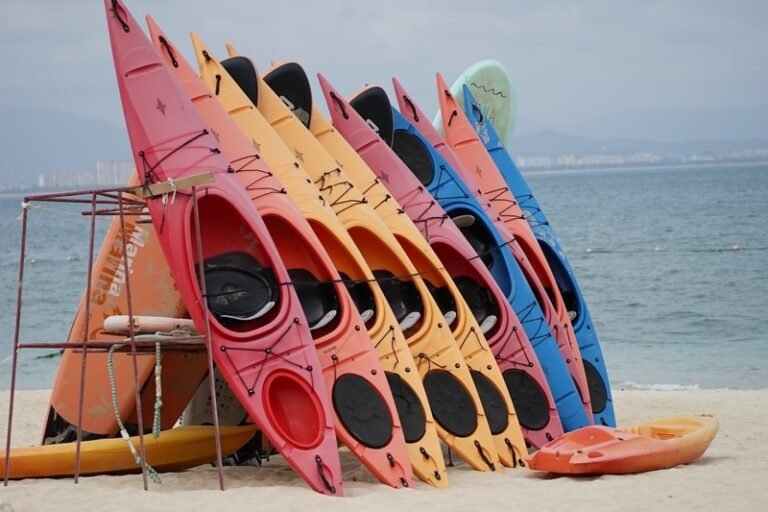How To Paddle A Kayak

Kayaking is a great way to enjoy the outdoors and get some exercise. The main equipment for this sport is the kayak, a watercraft propelled by paddles. There are several kayaks to choose from, each suited to a class of people on the water for optimum relaxation.
Kayaking can be enjoyed by people of all ages and is used for fishing, sightseeing, and so much more. However, if you are new to kayaking, it can be a little daunting to figure out how to paddle.
This guide will teach you the basics of paddling a kayak so that you can have a fun and safe experience.
How To Choose A Kayak
Kayaks are the most crucial equipment for kayaking. Choosing a kayak is an important decision, so it is important to do your research and make the right choice for your needs.
Several different types of kayaks are available, so it can be hard to decide what is best for you. Here are some tips to help you choose the right kayak:
- First, consider your intended use. Are you primarily going for fishing or paddling? Kayaks come in different sizes and styles based on the type of activity you plan to engage in. So if you’re looking for a general-purpose kayak, be sure to consider the size and style options available.
- Think about your budget. Do you want a recreational kayak or something more specialized? Do you want a traditional or inflatable kayak? Kayak prices vary, so you have to make sure that whatever kayak you’re looking for is within your price range.
- Think about the weight of your kayak and how much you can lift. Caring for your kayak is crucial if you want it to last. Consequently, your ability to properly maintain a kayak should be considered at the moment of purchase. The weight of the kayak plays a crucial role here, as if it is too heavy, you may not be able to store it in a cool place, leading to early deterioration and a waste of money.
- The load capacity of the kayak is also crucial. If you are willing to carry all the gear or other stuff on your trip, you have to make sure your kayak can handle that weight to stay safe on the water. If your kayak can’t handle the weight in it, it can capsize or worse.
- Where you want to kayak should also be considered. If you intend to use your vessel in rough waters, be sure to get a very sturdy kayak to ensure safety.
- Storage space is also a criterion to consider before purchasing a kayak. Your space should match the size of the kayak to ensure proper maintenance.
How To Get In And Out Of A Kayak
Kayaking is a great way to get in shape and have some fun. However, it can be tricky getting in and out of a kayak. Below are some tips for getting into and out of your kayak safely:
- Make sure you have the right size kayak. Most kayaks are standardized by length, but there are variations in width and depth. Make sure you pick the right size for your body type and weight.
- Wear the right gear. Make sure that you have a life jacket, paddle, and spray skirt if you plan on getting in and out of the water frequently. Ensure your life jacket is zipped, and that your spray skirt is securely fastened.
- Secure the kayak to a dock or pier. This will allow you to get into the kayak quickly.
- Practice getting in and out of your kayak before you go on your first outing. This will help you get the hang of it and make the experience more fun.
- Pushing with the oars against the water will help slow down the speed of the kayak, making it easier to maneuver and get out of. You can also use the handles to pull yourself up onto the deck or out of the kayak.
- Establish good paddling habits early on in your kayaking career. This will help you become more comfortable and confident in your kayaking skills.
If you find yourself stranded in your kayak, there are a few things you can do to get out. The most common way is to use the oars to paddle towards the shore.
If you are in a hurry and can’t paddle, you can try using the inflation tube on your kayak as a life jacket and jump out of the boat into water that is as cold as possible. If all else fails, you can try to use the emergency flare to signal for help.
How To Paddle A Kayak
Kayaking is a great way to get exercise and see some beautiful scenery. Like all things, however, knowledge and practice are required for mastery. Before you start paddling, keep these things in mind.
- Start by sitting in the kayak with your feet flat on the floor of the boat.
- Brace your core muscles and lift your torso so that your hips and shoulders are in line with each other.
- Extend your arms to the side and lean slightly forward.
- Using your wrists, move your boat paddle forward in a circular motion.
- Lean back slightly and bring your paddle back in line with your torso before repeating on the other side.
- Keep the kayak moving forward by keeping a straight back and using only your arms to paddle. When you reach the end of the current, start paddling again, pushing off with your legs and hands.
Basic strokes in kayaking
Kayaking is a great way to get exercise and see nature. It is also a fun activity that can be enjoyed by people of all ages. In order to kayak safely, it is important to know the basic strokes.
To become a master kayaker, complete mastery of these skills is essential as they will not only keep you safe on the water, they will ensure you have a good workout while having fun.
Forward Stroke
Forward stroke in kayaking is a technique that helps propel the kayaker forward. The forward stroke is the most common kayaking stroke.
It is important to use this stroke when paddling upstream or against the current, as it allows the kayaker to move more quickly through the water.
The forward stroke also minimizes drag on the kayak and allows for smoother movement. You can use this technique in calm or choppy waters. Forward stroke kayaking is great for beginners and those who are looking for a relaxed experience.
Backstroke
Kayaking is a great way to enjoy nature. One option for propulsion is to use the backstroke technique. As the name implies, backstroke allows the kayaker to move backward.
This technique becomes handy when you have passed your destination. Instead of turning and paddling forward, you simply paddle backward to your intended target. Backstroke is also useful in tight corners and is the swiftest way to get to a flipped kayaker.
Mastery of this skill is essential as it comes in handy in emergencies. The backstroke is also called the reverse stroke.
Draw Stroke
The draw stroke, otherwise called the side stroke, is used to move a kayak sideways. It is particularly useful when pulling your kayak alongside another vessel or in a small space. It is also one of the coolest kayaking stroke techniques you can use and can be used to show off.
Forward Sweep Stroke
The forward sweep stroke allows you to spin, turn, or adjust the course of your kayak. The typical forward sweep stroke involves a bow-to-stern stroke made with the paddle blade fully immersed in water, the paddle shaft kept as horizontal as feasible, and your back facing the paddle.
Propulsion is made in an arc, rotating your torso and paddle blade from bow to stern; your weight aids in the turn. This move can be performed underway and is a great way to safely turn your vessel.
Reverse Sweep Stroke
The reverse sweep stroke can be performed when paddling backward. It is the opposite of the forward stroke but performs the same function.
A reverse sweep stroke involves rotating your torso to plant the paddle blade as far back in the water as possible and pushing the blade out in a wide arc toward the kayak’s bow.
The strokes are produced without changing the hand position, and the rear of the blade is used.
How to choose a kayak paddle
Just as important as the kayak is its paddle(s). Kayaks are watercraft that depend on their paddles for propulsion, after all.
There are many factors to consider when choosing the right kayak paddle, including the type of kayak being used, your paddling style, and your personal preferences. Here are some things to keep in mind to help you choose the perfect paddle:
- Consider the type of kayak you’re using. A recreational kayak typically requires a shorter, lighter paddle, while a touring kayak may call for a longer, heavier paddle. Also, a traditional kayak has a single-bladed paddle at the stern, while an inflatable kayak may have multiple paddles.
- Determine your paddling style. If you’re a beginner, a paddle with a short shaft and a light blade is recommended. If you’re more experienced, you might want to choose a longer paddle with more grip.
- Blade shape and size. A round or elliptical blade is best for smooth water, while a V-shaped blade is better for choppy water.
- Construction: Fiberglass or wood? The former is more durable, but wood paddles are more traditional.
- Blade thickness: a thin paddle will be stiff and hard to use, while a thick paddle can be uncomfortable for extended paddling.
- Blade length: Since kayak paddles are intended for recreational use, a longer paddle is recommended.
- What activities will you be using your kayak for? If you are going to be racing, then you may want a thinner paddle for faster speeds. If you are going to be traveling, then you will probably want a thicker paddle for more control.
- Another thing to consider is how much you are willing to spend on a paddle. Naturally, a range of paddles exists on the market with a variety of price tags to them, so the choice comes down to what you want and how much you are willing to spare.
- Try different paddles out in the water before committing to one. Once you find a paddle that feels comfortable and is easy to control, it’s time to hit the water.
- Pay attention to the paddle you’re using. If it looks like your paddle is getting worn down, consider purchasing a new one.
- Be sure to store your paddle properly. Unless you’re in a kayak, your paddle should be stored in a dry place away from the sun and the heat of the car. If you’re going to carry it on a kayak, make sure it’s dry.
How to hold a kayak paddle
Kayaking is a great way to enjoy the outdoors and relax. However, mastering the art of kayaking can be difficult without the right equipment.
One of the most important pieces of equipment for kayakers is the paddle. Paddles come in a variety of shapes and sizes, but all serve the same basic purpose- to move the kayaker forward.
If you’re new to kayaking or want to improve your skills, it can be helpful to learn how to hold the paddle correctly. Here are five tips for holding a kayak paddle the right way:
- Keep your arms straight and relaxed.
- Keep your elbows close to your body.
- Extend your arms at least 45 degrees away from the body.
- Keep your wrists straight and relaxed.
- Don’t hold the paddle with your fingers.
How to size a kayak paddle
Kayaking is a great way to get outdoors and enjoy nature. But before you can kayak, you need to know how to size a paddle. There are a few different types of paddles, each with their own size requirements. Here are five tips to help you choose the right paddle for your needs.
- Determine your kayak’s length and width.
- Compare kayaks with similar specs.
- Determine the stroke length of your kayak.
- Determine your height and weight.
- Consider the distance you’ll be paddling. The length of the paddle should be proportional to the distance you’ll be paddling.
- Compare paddle lengths with those requirements to make a smart pick.
- Kayak paddles come in both fixed-length and adjustable-length options. If you’re just starting out, go with an adjustable-length paddle because it will make the experience easier.
How to use a kayak paddle
Kayaking is a great way to get an upper-body workout while enjoying the scenery. Paddling a kayak is a lot of fun, but it can be more difficult than it seems if you don’t know how to use a kayak paddle. If you’re new to kayaking or have never used a paddle before, here are some tips on how to use one.
- First, find a kayak that is comfortable for you. You’ll want to sit in the kayak with your feet flat on the floor of the boat and your hips and shoulders balanced over the edge.
- Next, find a paddle that is comfortable for you. If you’re new to paddling, you may want to start with a smaller paddle that is easy for you to learn. A paddle can be made of wood, plastic, or even foam.
- Get comfortable before you start. Take some time to adjust your body and get used to the position of the kayak before you try to paddle.
- Keep your arms and legs relaxed and parallel to the water. You’ll be able to paddle more efficiently if you keep your arms and legs relaxed and parallel to the water.
- Keep your knees bent and focus on keeping your torso straight. The easiest way to do this is by keeping both feet flat on the deck of the kayak.
- Keep your elbows bent. This will help you to maintain a straight line from your shoulders to the kayak’s blade.
- Depending on the stroke you’re performing, paddle you’re your kayak. If you are a novice, the forward stroke is recommended for practice.
How to paddle a kayak with two people
Kayaking can be a great way to enjoy the outdoors with friends, family, or coworkers. With two people, it’s easy to get along and keep up. Here are five tips for paddling with two people:
- Choose a kayak that is comfortable for both you and your partner.
- Make sure you are both properly prepared for the trip by wearing sunscreen, sunglasses, and hats, and packing enough food and water for the journey.
- Make sure you both know how to paddle, everyone should be comfortable with the basic strokes. Everyone should be able to sit in the same position and use the same hand positions for the basic strokes.
- and are ready for it to be your first time.
- Talk about the trip beforehand and plan your route ahead of time. This will help everyone get a good start and understand what to expect.
- Make sure someone knows how to use the paddle for rescue and maintenance.
- Paddle together or in tandem, based on your preferences.
- If you are paddling with someone new, try to get along and figure out how you want the trip to go. Confusion in paddling could lead to an accident, negating the fun part of kayaking.
How to measure a kayak paddle
Kayaking is an immensely popular sport that can be enjoyed by people of all ages and skill levels. However, before you can even get into the water, you need to make sure that your paddle is fit for the task at hand.
There are a variety of ways to measure a kayak paddle, but the most accurate way to do so is by using a jumping gauge. This tool measures the amount of resistance that the blade has against the water.
As paddle length also plays a role in whether a paddle is fit for the task at hand, knowing paddle length is crucial. You can measure it with a tape rule or a ruler.
To measure with a tape rule, simply align your paddle with the tape and read the length of the tape. You can then decide if the paddle is fit for use or if a replacement is necessary. To measure the paddle length with a ruler, follow these tips.
- Get a ruler that is the same length as your paddle.
- Hold the end of the ruler against the bottom of the paddle and make a mark.
- Measure the length of your paddle from where you made the mark to the end of your ruler.
- The reading on the ruler gives you the length of your paddle
How to paddle a tandem kayak
A tandem kayak is a type of kayak that has two seats instead of one. It is a kayak designed for two people to use at the same time. This allows the kayaker to use both arms and legs to paddle.
They are also easier to balance because of the extra seat. Tandem kayaks are usually much larger than single kayaks and can be used for more adventurous trips.
They are also much more expensive than single kayaks, but they can be a great option if you want to explore remote areas or if you have a partner who is into kayaking.
Tandem kayaks are great for rivers, canals, and lakes because they allow you to cover more water with each stroke. The following tips will help you safely paddle a tandem kayak.
- Tandem kayaks offer a lot of versatility and safety benefits over single kayaks.
- It’s important to read the instruction manuals thoroughly before paddling, as tandem kayaking is a more complicated form of water transportation than single kayaking.
- Make sure to be in sync with your partner while paddling, and practice frequently to stay coordinated.
- It’s important to wear a life jacket, as the force of water traveling at high velocities can be dangerous.
- Practice paddling techniques in calm water before venturing into rough or choppy waters, and always watch for potentially dangerous obstacles or conditions, such as strong currents and waves.
How to paddle a sit-on-top kayak
If you’re interested in kayaking but haven’t tried a sit-on-top kayak yet, now is the time. These versatile and fun boats are easy to paddle and can be enjoyed anywhere there is water. Here are five tips for paddling a sit-on-top kayak:
- Get comfortable. Make sure you have adjusted your seat and straps properly before getting into the boat. A kayak seat should be adjustable so you can get a good fit. If your kayak comes with adjustable straps, make sure they are tight enough to support you in the boat.
- Paddle like you would when boating on the water, but always be aware of your surroundings. Hold your paddle right and employ kayaking strokes for propulsion.
- Paddle smoothly and evenly with the flow of the water. It is advisable not to venture into choppy waters with sit-on-top kayaks.
- Keep your arms and legs tucked in so you don’t lose balance.
- Have fun!
How to paddle a kayak in a straight line
Kayaking is a great sport for both novice and experienced paddlers. However, to paddle a kayak in a straight line, you need to master the basics of kayaking. Here are some tips on how to do it:
- First, make sure your boat is in the right position. Kayakers often lean too far forward or backward when they’re paddling, which can cause them to veer off course
- Sit up tall in the kayak and brace your core muscles.
- Keep your arms and legs relaxed and steady.
- Keep your head up and look forward. Do not look down at your feet.
- Apply pressure on the blade with your legs while maintaining an upright torso. In this position, you are balanced, and that allows you to perform all of the necessary movements for kayaking.
- Once you have your boat positioned correctly and are well seated, it’s important to keep your strokes consistent.
- Use your paddles to precisely control the direction of your boat.
- Finally, use your timing and rhythm to stay in control.
Kayaking can be a fun and exhilarating experience, but it is important to be safe while doing it. An important part of safety is paddling the kayak.
It is therefore important to be aware of the basic techniques for paddling a kayak before hitting the open water. The type of paddle you use also plays a role in how safe you’ll be. The paddle in use should be suited to you, your vessel, and the activity being performed.
With the right instruction, anyone can learn how to paddle a kayak safely and efficiently, so attend a kayak school if you’re just starting out to equip yourself with the knowledge and experience needed to perform this sport.
You should also be aware of other hazards on the water, employ safe paddling practices, and obey local boating rules.
Remember to always wear a life jacket, stay aware of your surroundings, and avoid paddling in rough water. With these tips in mind, you are sure to have a great time kayaking!






